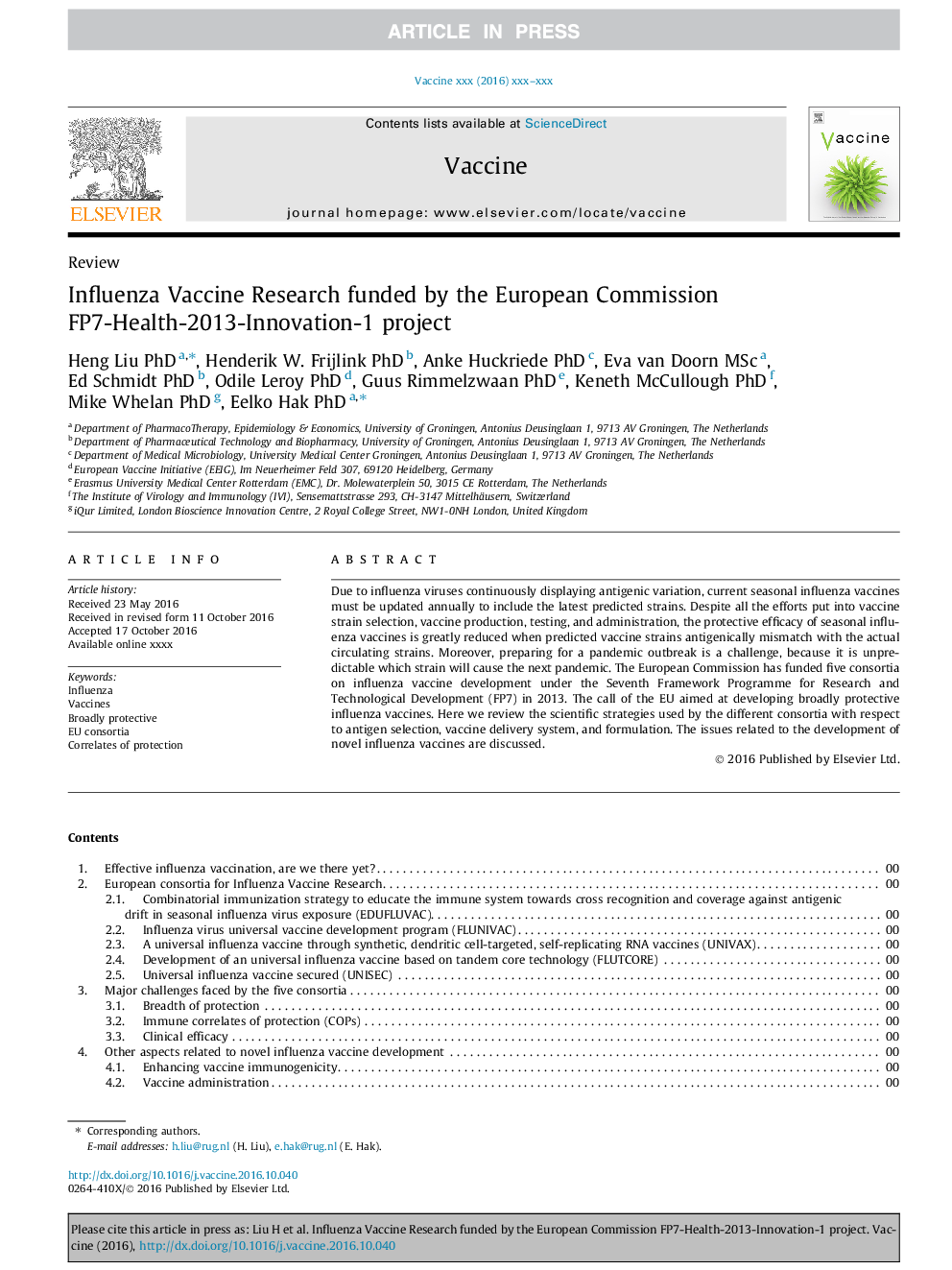| Article ID | Journal | Published Year | Pages | File Type |
|---|---|---|---|---|
| 5537354 | Vaccine | 2016 | 10 Pages |
Abstract
Due to influenza viruses continuously displaying antigenic variation, current seasonal influenza vaccines must be updated annually to include the latest predicted strains. Despite all the efforts put into vaccine strain selection, vaccine production, testing, and administration, the protective efficacy of seasonal influenza vaccines is greatly reduced when predicted vaccine strains antigenically mismatch with the actual circulating strains. Moreover, preparing for a pandemic outbreak is a challenge, because it is unpredictable which strain will cause the next pandemic. The European Commission has funded five consortia on influenza vaccine development under the Seventh Framework Programme for Research and Technological Development (FP7) in 2013. The call of the EU aimed at developing broadly protective influenza vaccines. Here we review the scientific strategies used by the different consortia with respect to antigen selection, vaccine delivery system, and formulation. The issues related to the development of novel influenza vaccines are discussed.
Related Topics
Life Sciences
Immunology and Microbiology
Immunology
Authors
Heng PhD, Henderik W. PhD, Anke PhD, Eva MSc, Ed PhD, Odile PhD, Guus PhD, Keneth PhD, Mike PhD, Eelko PhD,
